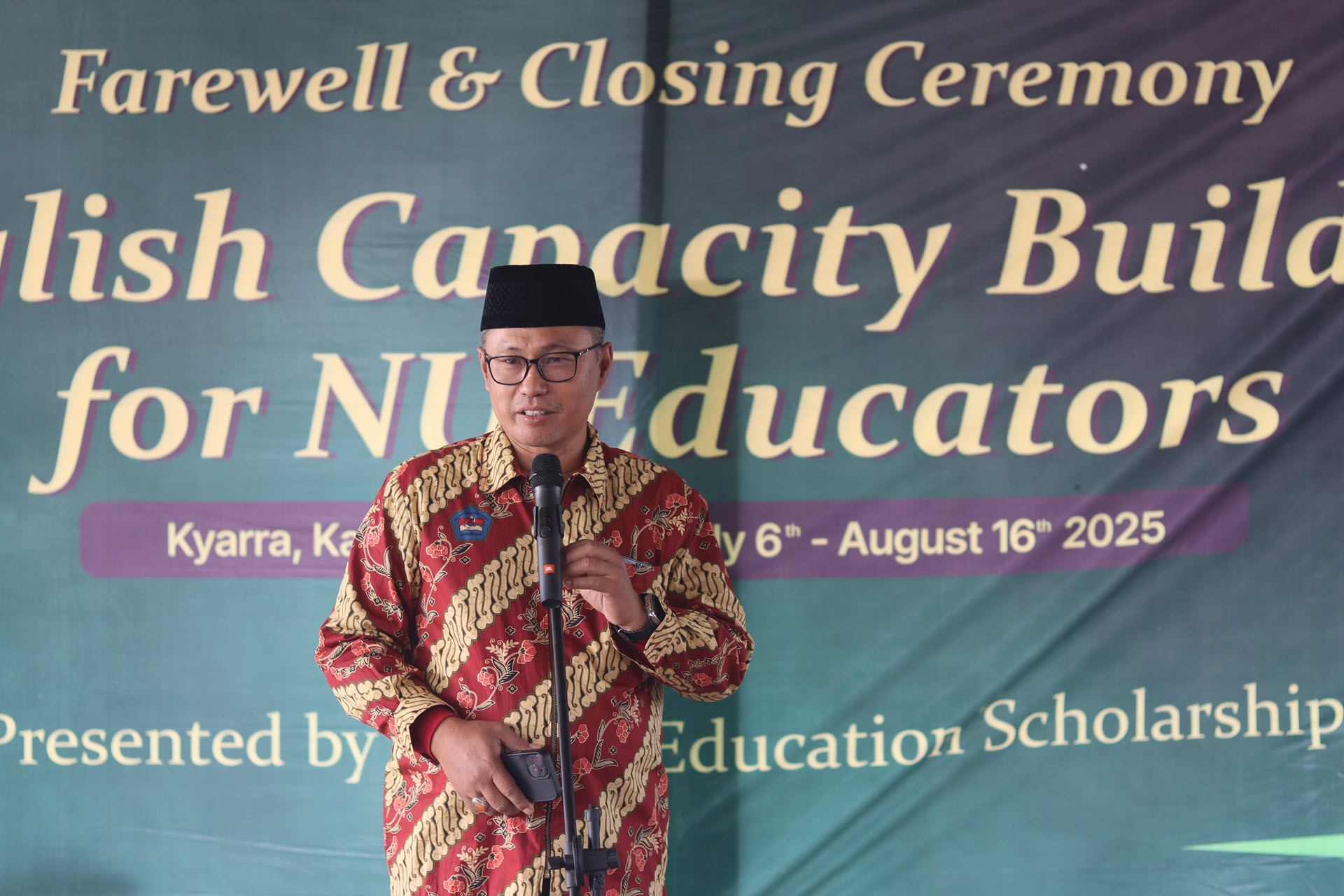
Reframing Learning
The English Capacity Building Program for NU teachers unfolded as a vibrant, unpredictable journey. Each week brought its own set of challenges—difficulty adapting, psychological resistance, time management issues, excessive complaints, and lapses in discipline. Yet beneath the surface of confusion and discomfort, something more essential was happening: the slow, deliberate process of transformation. Participants began not only to learn a language but also to rediscover what it means to learn itself.
In the first week, adaptation proved difficult. Many participants struggled to adjust to the new rhythm and expectations, often constrained by a sense of mental blockage. Time management faltered, interaction was minimal, and several participants withdrew into silence. Such behavior reflected what Paulo Freire described as the legacy of the banking model of education, in which learners are treated as passive containers to be filled rather than active co-creators of meaning. The turning point came when facilitators began to open dialogue sessions, inviting participants to discuss not only the rules but also the purpose behind them. Through collective conversation, the rules were reframed—not as restrictions, but as a shared social contract enabling freedom and fairness.
By the second week, complaints began to multiply. Some felt the rules were too rigid, others sought excuses to avoid certain activities. Yet these moments of tension became a perfect space for transformation through intrinsic motivation, as described by Daniel H. Pink. When participants were given small degrees of autonomy—such as choosing additional learning mechanisms or adjusting their study rhythm—they began to regain a sense of control. The concept of mastery was introduced gradually: step-by-step learning goals replaced the anxiety of unreachable targets. Purpose was emphasized through reflection: learning English was not a mere academic pursuit, but a service to future students, a way to expand NU educators’ capacity to share knowledge beyond boundaries. Once this purpose was internalized, complaints subsided, replaced by curiosity and persistence.
The third week marked a breakthrough. After progress results were announced, several participants voluntarily organized peer-learning sessions to help others catch up. What began as an informal gesture evolved into a collective movement. In Freirean terms, this was a moment of conscientization—learners transcending the passive role and acting as subjects of their own transformation. From Pink’s perspective, this reflected a surge of intrinsic motivation built on autonomy and mastery. For Marzano, it exemplified an ideal classroom climate, where responsibility for learning is shared and reinforced from within. Solidarity became both a learning method and an outcome, turning individual success into communal growth.
By the fourth week, new challenges arose: the gap between participants’ English proficiency levels became evident. Some felt the TOEFL material was too advanced, while others managed comfortably. This tension, rather than fragmenting the class, opened a new space for creativity. Instead of dividing the group strictly by level, facilitators encouraged collaborative tutoring. Those more advanced became mentors; those still struggling found support and safety to ask questions. What once felt like weakness transformed into shared strength. Freire’s dialogical pedagogy came alive: questions were not disturbances but bridges to understanding. Pink’s Goldilocks Zone—tasks that are neither too easy nor too hard—was realized in the balance between challenge and support.
Of course, not all challenges disappeared. Some participants continued to resist certain routines or directions. Here, Marzano’s theory of classroom management became indispensable. Facilitators applied behavioral contracts and stepwise accountability, combining firmness with empathy. Discipline was no longer punitive but educative—an instrument for mutual respect. Within two weeks, observable improvement appeared. Lateness decreased, class participation increased, and those who once withdrew began to re-engage.
In the fifth week, attention turned to micro-coaching and linguistic preparedness. Compared with previous batches, this cohort began from more diverse academic backgrounds, which initially created imbalance. Instead of viewing this as a deficit, the facilitators restructured the learning path. Daily conversation practice was prioritized before moving toward academic-level material, allowing every participant to progress at their own pace. This scaffolding produced visible confidence and engagement. Participants no longer felt overwhelmed; they felt guided.
Taken together, these episodes reveal not a troubled program but a living, evolving organism. Every difficulty became a diagnostic mirror; every conflict, an opportunity for redesign. Mental blocks turned into awareness. Complaints evolved into constructive dialogue. Anxiety was replaced by solidarity. Neglect became responsibility. Differences in ability became bridges for cooperation. Freire’s pedagogy of liberation, Pink’s framework of intrinsic motivation, and Marzano’s research on structured management converged here, forming an ecosystem of learning that was as humane as it was disciplined.
The program’s achievements can be seen both in spirit and in measurable outcomes. Punctuality improved by nearly half within the first two weeks. Attendance during collective prayers and group sessions remained consistently above ninety percent. Participation increased dramatically, with nearly every participant contributing meaningfully in weekly discussions. Complaints that once dominated conversations were transformed into actionable proposals. Diagnostic TOEFL scores rose significantly across the cohort, while weekly quizzes showed an average mastery rate above seventy-five percent. Behavioral incidents declined sharply, and instances of voluntary peer mentoring grew steadily each week.
These indicators reveal the true success of the English Capacity Building Program for NU teachers: it cultivated both competence and conscience. It proved that education is not merely about skill acquisition but about the awakening of responsibility, collaboration, and purpose. The participants did not just learn English; they rediscovered their vocation as educators—teachers who can now model resilience, empathy, and curiosity for their students.
In the end, the story of this program is not one of perfection but of growth. It stands as evidence that when dialogue replaces command, when motivation comes from within, and when discipline is anchored in care, education fulfills its deepest promise: to humanize, to liberate, and to transform.